Kyoto, the ancient capital of Japan, is a city steeped in centuries-old traditions and cultural practices, none more revered than the tea ceremony. At Jotoku-ji Temple, visitors can enjoy the precise, meditative movements and deep symbolism of this refined art form. Over the course of an intimate, 70-minute experience, guests will partake in a purification ritual, sample exquisite matcha tea, and gain insights into the ceremony’s aesthetic and philosophical underpinnings. Surrounded by the temple’s serene architecture and meticulously manicured gardens, this exclusive opportunity allows one to truly appreciate the enduring significance of this celebrated cultural tradition.
Key Points
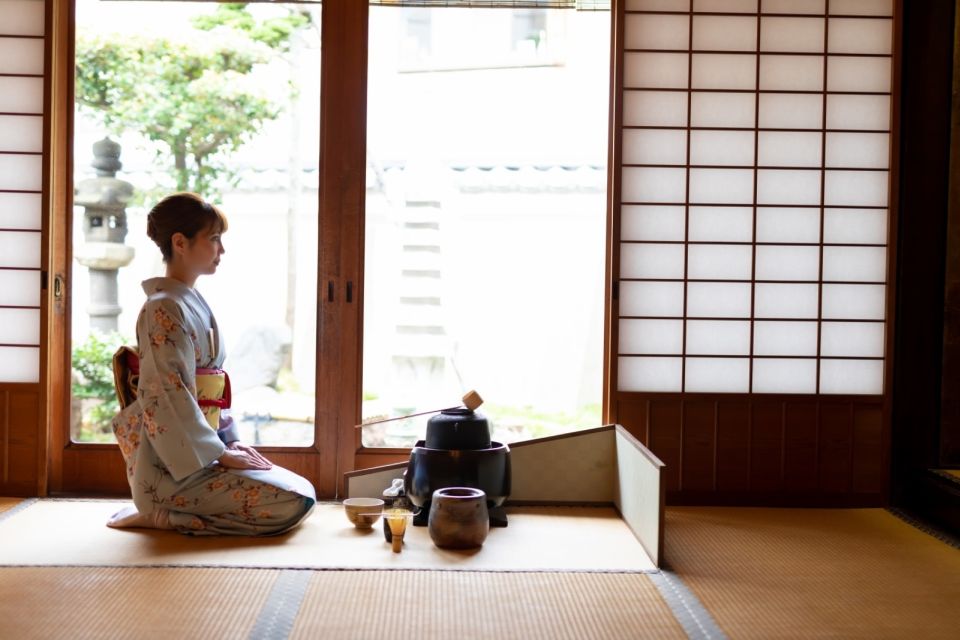
- An immersive 70-minute tea ceremony experience at the serene Jotoku-ji Temple in Kyoto, limited to 9 participants.
- The ceremony includes a purification ritual, removal of shoes, and a guided explanation of the centuries-old tradition.
- Participants will sample revered matcha tea, appreciating its velvety texture and subtly sweet, umami-rich flavor.
- Booking is highly recommended due to small group size and high demand, with a generous cancellation policy.
- The meeting point is at the steps leading to the tea room, facing the temple’s Main Hall, in a tranquil atmosphere.
Experience Overview
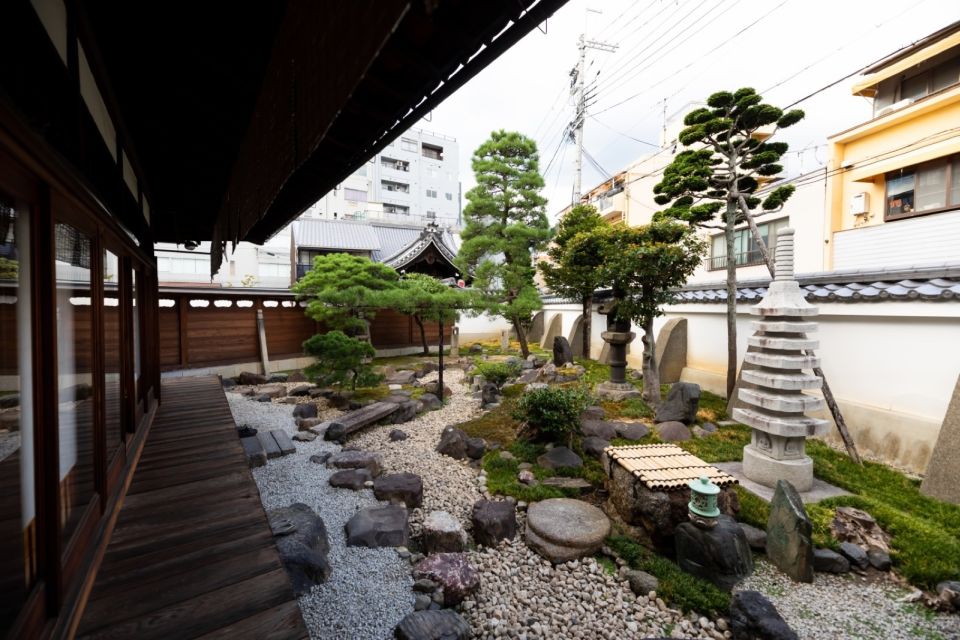
The traditional Japanese tea drinking ceremony at the Jotoku-ji Temple in Kyoto offers visitors a 70-minute immersive experience into the art and social significance of this centuries-old cultural practice.
Held within the serene temple grounds, the intimate ceremony is limited to just 9 participants, allowing you to marvel at the beautiful architecture and fully engage with the guide’s explanations of each captivating step.
From the purification ritual at the entrance to the removal of shoes before entering the traditional tea room, you’ll be transported into a world steeped in rich history and refined traditions.
The highlight, of course, is the opportunity to sample the revered matcha tea, a true sensory delight.
You can also read our reviews of more tours and experiences in Kyoto.
Highlights of the Ceremony
One of the highlights of the tea ceremony is the chance to marvel at the serene temple architecture that sets the stage for this centuries-old ritual. The Jotoku-ji Temple features stunning examples of classic Japanese design, from its elegant wooden structures to the meticulously manicured gardens that surround the tea room.
As participants enter the intimate space and remove their shoes, they’re struck by the tranquility that permeates the atmosphere.
Another highlight is the small group size, limited to just 9 people, which allows for a more personalized and immersive experience. Throughout the ceremony, the expert guide skillfully explains the significance and meaning behind each step, providing valuable insight into the art and social importance of the Japanese tea ceremony.
Purification Ritual at Entrance
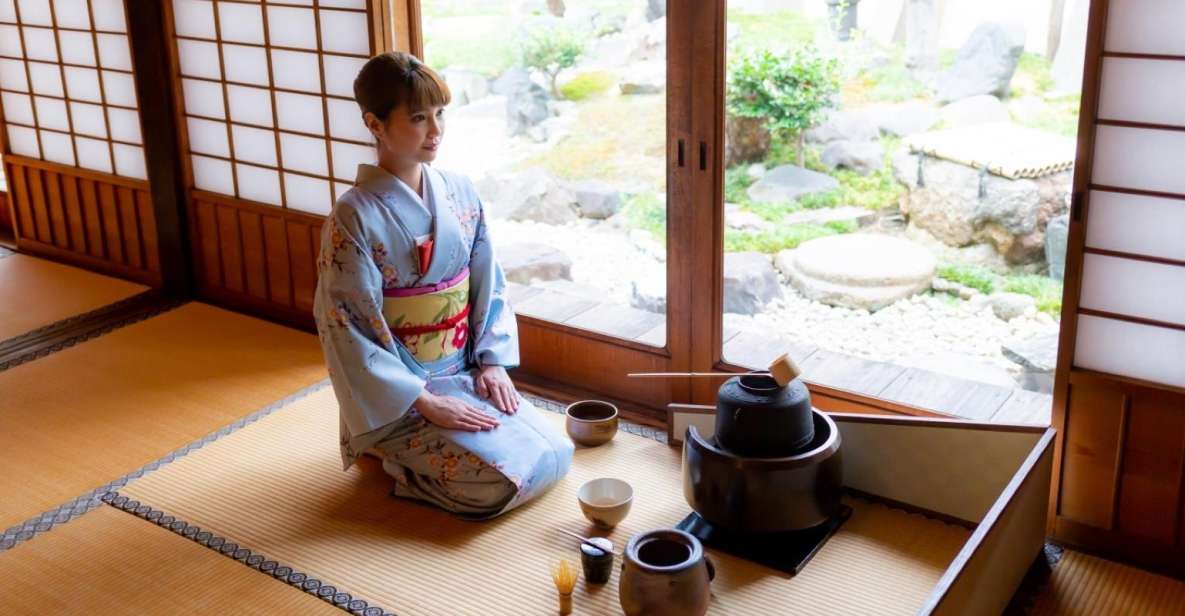
As participants approach the Jotoku-ji Temple, they’re first greeted by a purification ritual at the entrance. Visitors rinse their hands and mouth with water from a nearby basin, symbolically cleansing themselves before entering the sacred space of the tea ceremony. This thoughtful gesture sets the stage for the tranquility and mindfulness to come. The purification ritual invites guests to leave the outside world behind and focus their senses on the present moment.
| Emotion | Description | Impact |
|---|---|---|
| Reverence | Cleansing the body and mind | Prepares the participant for the solemn ceremony |
| Anticipation | Entering a hallowed space | Heightens the sense of occasion and significance |
| Calm | Transitioning to a state of mindfulness | Cultivates a receptive mindset to fully engage with the tea ritual |
Removing Shoes at Tea Room

Upon entering the tea room, participants respectfully remove their shoes, leaving them neatly outside the doorway. This simple gesture symbolizes a transition from the external world into the tranquil sanctuary of the tea ceremony.
By shedding their footwear, guests shed the distractions of daily life and ready themselves to fully immerse in the meditative ritual to come. The bare feet on the tatami mats further connect the participants to the space, grounding them in the moment.
This act of removal is imbued with mindfulness, as guests carefully arrange their shoes, setting aside material concerns in preparation for the profound cultural experience that awaits. Every detail of the tea ceremony holds significance, and the shedding of shoes is a poignant first step.
More Great Tours NearbyGuided Explanation of Ceremony
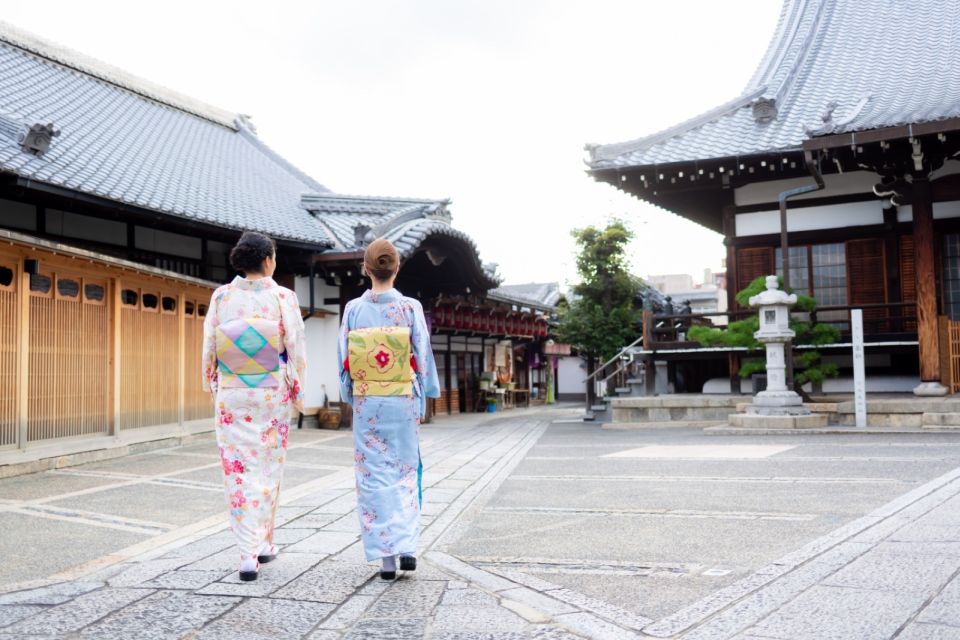
After participants have removed their shoes, the trained tea ceremony guide meticulously walks them through each step of the ritual, imparting insights into the deeper meaning and symbolism behind every graceful movement.
Employing minimal yet purposeful gestures, the guide delicately prepares the matcha tea, elucidating the significance of each action as the group observes in reverent silence.
By narrating the ceremony, the guide not only educates participants but also invites them to cultivate a sense of profound connection to the centuries-old tradition unfolding before their eyes.
The guide’s thoughtful explanations reveal the intricate interplay of aesthetics, philosophy, and etiquette that imbues the Japanese tea ceremony with its profound cultural significance.
Sampling Matcha Tea
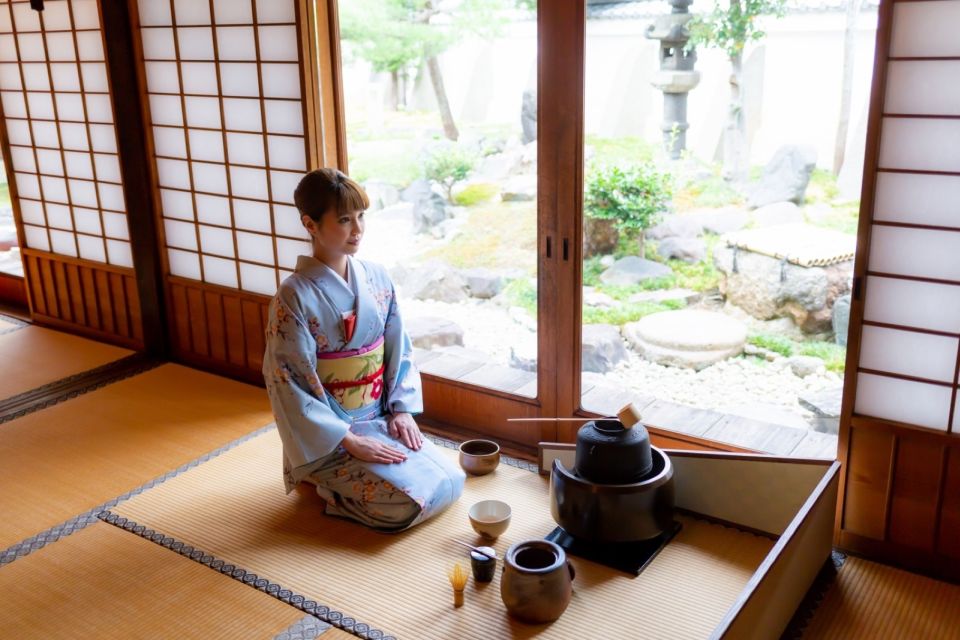
Participants then receive a delicate serving of frothy, vibrant green matcha tea, crafted with utmost care and precision by the guide.
The guide reverently pours the tea, its earthy aroma filling the serene space. Cradling the delicate ceramic bowl in their hands, guests take a moment to appreciate the tea’s velvety texture and subtly sweet, umami-rich flavor.
As they sip, they’re transported to a realm where time seems to slow, allowing them to fully enjoy the experience. The matcha’s vivid color and robust taste evoke a sense of tranquility, reminding participants of the deep cultural significance and artistry inherent in this revered Japanese tradition.
Booking and Cancellation Details

Booking the Kyoto tea ceremony at Jotoku-ji Temple is highly recommended, as the small group size limits participation and the experience is likely to sell out.
Guests can reserve their spot now and pay later, providing flexibility in planning. Plus, a generous cancellation policy allows for free cancellations up to 24 hours in advance, accommodating any last-minute changes in schedule.
The booking and cancellation details for this immersive cultural experience reflect the thoughtful and considerate nature of the organizers. Guests can look forward to:
- Reserving now and paying later
- Free cancellation up to 24 hours in advance
- Small group size, ensuring an intimate and personalized experience
- High demand, making early booking advisable
Locating the Meeting Point
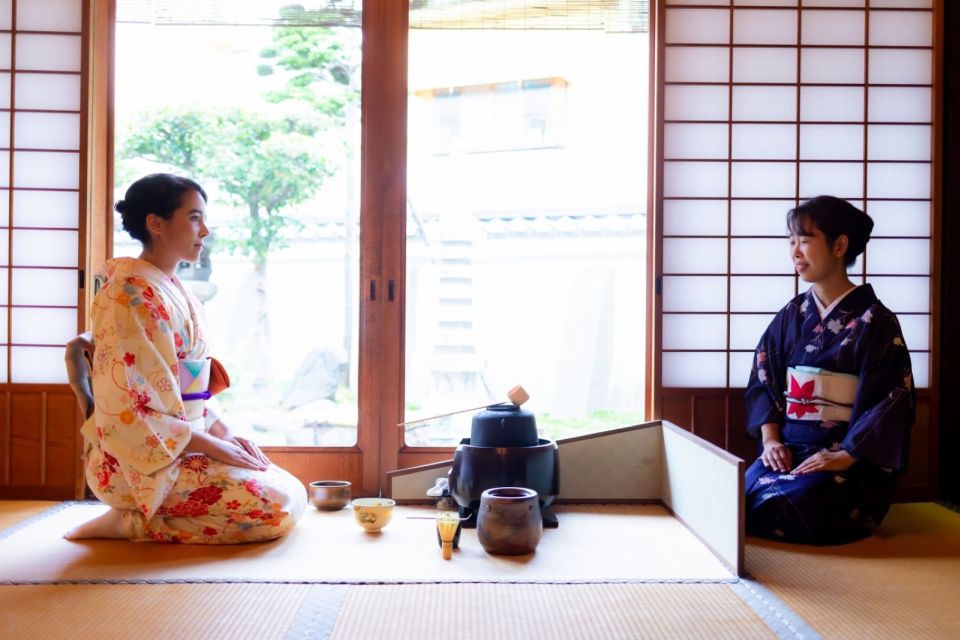
Facing the Main Hall of the Jotoku-ji Temple, guests need only look to the left to find the steps leading to the intimate tea room where the Ju-An ceremony takes place.
The temple’s serene architecture sets the tone for the deeply contemplative experience to come.
As visitors ascend the steps, they’ll notice the tranquil atmosphere that pervades the area around the tea room.
This is the entrance to a centuries-old tradition, one that offers a chance to step away from the bustle of everyday life and take in the graceful rituals of Japanese tea culture.
With the main meeting point clearly marked, guests can proceed with confidence, ready to embark on a truly unique and enlightening journey.
Frequently Asked Questions
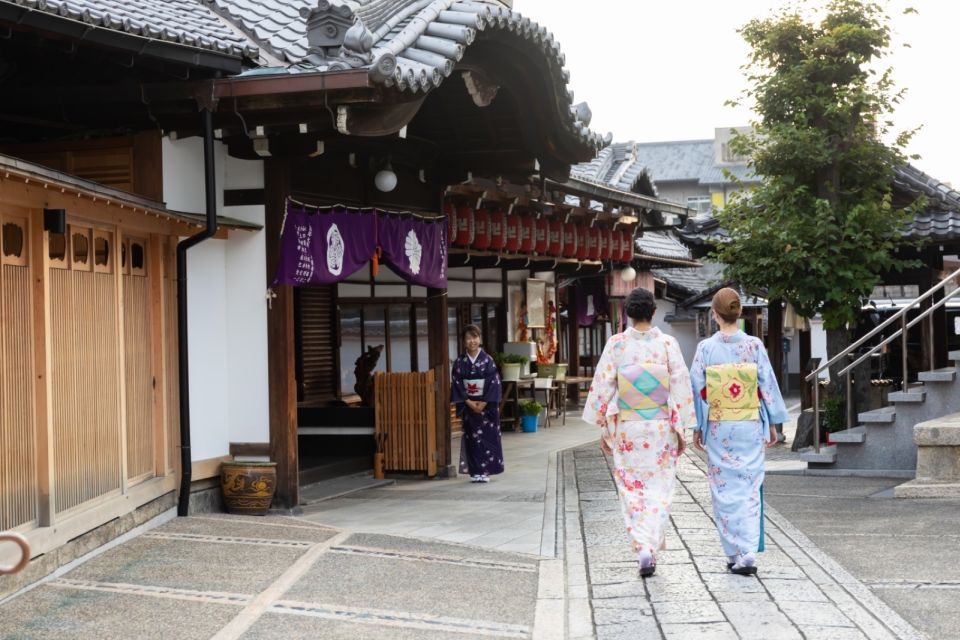
Can We Take Photos During the Ceremony?
Photos aren’t allowed during the serene tea ceremony. The focus is on the mindful experience and respecting the traditional customs. Capturing the moment on camera would disrupt the peaceful atmosphere and contemplative nature of the ritual.
Is the Tea Ceremony Suitable for Children?
The tea ceremony may not be the most suitable experience for young children. It requires attentive participation and quiet contemplation, which can be challenging for restless kids. However, older children may appreciate the cultural significance and ceremonial aspects if prepared and accompanied by an adult.
What Should We Wear to the Tea Ceremony?
For a traditional Japanese tea ceremony, comfortable, modest attire is recommended. Opt for loose, flowing fabrics that allow easy movement and avoid bright colors or patterns. Refrain from wearing shoes inside the tea room.
Is the Tea Ceremony Accessible for Wheelchair Users?
The tea ceremony is generally accessible for wheelchair users, though the traditional tea room may present some challenges. Inquiring with the organizers about accessibility accommodations is recommended to ensure a comfortable and inclusive experience.
Can We Purchase Souvenirs at the Temple?
Visitors can purchase a variety of souvenirs at the Jotoku-ji Temple, including traditional Japanese tea ware, ceramics, and other artisanal crafts. These make for wonderful mementos to commemorate one’s experience of the iconic tea ceremony.
Recap
The tea ceremony at Jotoku-ji Temple immerses visitors in the centuries-old tradition, offering a serene and contemplative experience.
From the purification ritual to the sampling of exquisite matcha tea, every detail is imbued with deep symbolism and aesthetic significance.
Participants leave with a newfound appreciation for the meditative movements and philosophical underpinnings that make this cultural practice so revered in Japan.
You can check availability for your dates here:More Tour Reviews in Kyoto
- Kyoto: Discover Every Bit of Ginkakuji Temple in 60 Minutes
- Private Full-Day Walking Tour of Kyoto
- Hidden Temples in Kyoto a Self-Guided Zen Tour
- 2 Hour Private Tour of Arashiyama Highlights
- Nara 9hr Tour Licensed Guide&Vehicle: Kyoto Pickup/Osaka Dropoff
- Kyoto: Half-Day Private Tour Gion Geisha Districts & Kiyomizu
Not for you? Here's more nearby things to do in Kyoto we have reviewed
- Kyoto: Discover Every Bit of Ginkakuji Temple in 60 Minutes
- Private Full-Day Walking Tour of Kyoto
- Hidden Temples in Kyoto a Self-Guided Zen Tour
- 2 Hour Private Tour of Arashiyama Highlights
- One Way Bus From Kanazawa to Kyoto
- Nara 9hr Tour Licensed Guide&Vehicle: Kyoto Pickup/Osaka Dropoff
- Original Pizza Making Using Kyoto Vegetable at BNR Night Farm
- Kyoto 8 Hr Tour From Osaka: English Speaking Driver, No Guide
- Kyoto: Half-Day Private Tour Gion Geisha Districts & Kiyomizu
- Kyoto Sweets & Desserts Tour With a Local Foodie: Private & Custom
- Arashiyama Autumn Leaves & Sanzen-In Temple Tour From Osaka/Kyoto
- Kyoto: Top Sake Region Tour – 2.5 Hours, 3 Tasting Spots
